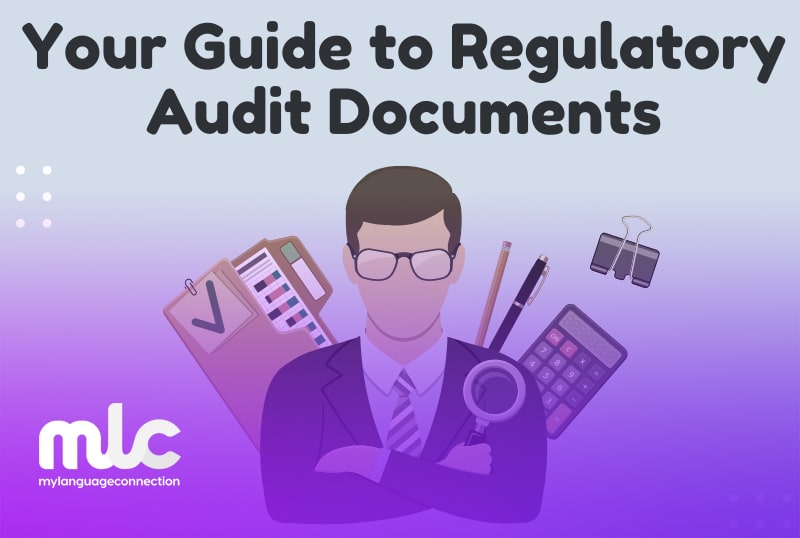Regulatory audit documents are one of the most important pieces of documents in the healthcare industry. It ensures compliance of existing regulatory standards to ensure patient safety and quality of healthcare and medical services.
 Regulatory compliance standards are a set of policies that govern all formally registered organisations. The purpose is to ensure that all existing organisations must abide by certain standards to ensure quality and compliance. The regulatory audit document is, therefore, one of the most important documents that you must prepare.
Regulatory compliance standards are a set of policies that govern all formally registered organisations. The purpose is to ensure that all existing organisations must abide by certain standards to ensure quality and compliance. The regulatory audit document is, therefore, one of the most important documents that you must prepare.
In this guide, you will learn everything there is to know when preparing this document.
What is a Regulatory Audit Document?
To know what this document is for, first it is important to define regulatory audit means. This document is required as part of the organisation’s legal compliance and serves as proof of compliance to existing regulatory health and safety standards, as well as those for labour and other industry-specific standards.
Also known as compliance audit, this type of documentation is a record that auditors keep when conducting an independent evaluation. When most people hear the word ‘audit’, they often think of it in the financial sense. However, audit could also mean to assess compliance to certain laws, regulatory standards, and other systems in place that govern a private or public organisation.
This documentation can be initiated externally or internally, depending on the intended purpose and use for the audit work. When initiated internally, it is often performed upon the request of the board of directors. An audit is also designed to provide the organisation and its leaders recommendations on how and where improvements could be made. It is a tool that can be used by an organisation to make necessary improvements or the appraisal of existing processes to maintain and assert quality.
The Purpose of a Regulatory Audit Document
 Regulatory audit documents can serve a variety of purposes. First off, it can be used as an evidence for the completion of a work provided and the conclusion that was derived based on that work.
Regulatory audit documents can serve a variety of purposes. First off, it can be used as an evidence for the completion of a work provided and the conclusion that was derived based on that work.
In addition to reporting the summary of the work done, regulatory audit documents are prepared to ensure that an organisation is in compliance with an external set of laws, rules, and policies specific to the industry. Compliance is a very serious matter with equally serious implications. For example, medical and healthcare organisations must have ISO certifications in place to ensure that they meet the existing standards for their practice. If these regulatory standards and compliance policies are not met, the organisation could be meted with penalties.
Finally, internal audit is also performed in an organisation to ensure that all departments are held accountable. A full audit report provides a detailed insight into the internal processes of the company to identify potential deficits in delivering a service or product, as well as identify potential illegal activities.
There is a huge difference between auditing and monitoring. Therefore, these two must be performed separately and independently of each other. Monitoring is done internally while auditing should be performed by an independent party.
How is Audit Conducted?
All organisations must undergo regulatory compliance audits to ensure that they practice the mandated regulatory standards by local and international laws. With that said, it is important to know how this process is conducted.
The audit may be performed by one person or a team of auditors. It will depend on the specific type of audit to be done as it might require different areas of specialisation – for example, IT, security, HR, and compliance auditors. The nature of the audit will also determine if the auditors must gather judgmental or statistical sampling.
The auditor (or team of auditors) can work on-site and may also request essential documents. They might evaluate infrastructure and other features, or interview the employees and management.
Once everything is done, the auditor will go through the documents and their findings to provide a detailed report. The turnaround time of the report will depend on the purpose and whoever requested the audit.
Internal vs External Audit Requirements
As mentioned above, audits can be done internally and externally. The difference between the two lies in the purpose of the audit and how it is performed.
External audit ensures compliance with federal and state laws with which an organisation operates under and must adhere to. It must be performed by external auditors to ensure that they are independent of your organisation and to presume objectivity. An external auditor can also guarantee that the data is assessed and results are presented from an objective standpoint.
An internal audit is to ensure compliance of the workplace standards set within an organisation. The audit is typically performed by the HR manager or an internal auditor. The designated auditor must use an objective approach to the review and when presenting conclusions. The report will be presented to the board of directors for internal discussions on how processes and procedures can be improved.
What’s in a Regulatory Audit Document?
An audit report does not need to include every bit of information that was observed or assessed upon evaluation. An experienced and professional auditor knows what essential information must be included in the report, and which ones can be omitted. Identifying the essential information is crucial to achieve the purpose of the audit.
A regulatory audit document will vary based on a few basic factors:
- Size of the organisation
- Complexity of the business
- Identified risks
- Significant evidence of compliance
- Recommendations
 With these factors in mind, a regulatory audit document must contain a detailed report of the existing procedures and policies. This document will serve as the evidence that the organisation must present to the regulators as proof of compliance. The document must also contain any deficiencies or identified risks that need to be revised or improved on for the organisation to achieve compliance.
With these factors in mind, a regulatory audit document must contain a detailed report of the existing procedures and policies. This document will serve as the evidence that the organisation must present to the regulators as proof of compliance. The document must also contain any deficiencies or identified risks that need to be revised or improved on for the organisation to achieve compliance.
Importance of Regulatory Audit in Healthcare Organisations
Compliance auditing is important across various industries. However, auditing is most important in healthcare organisations since they are subject to a wide range of regulatory and safety laws and policies. Organisations in the healthcare industry are exposed to a lot of risks especially in terms of handling patient’s health and lives, as well as in the storage and security of patient health information.
Without this audit, there is no real way to measure and assess healthcare policies of concerned organisations. The importance of conducting the audit is more than just for the present policies of healthcare organisations, but also to ensure that future policies are aligned with the evolving healthcare needs of patients and to make appropriate recommendations to improve the quality of patient care.
My Language Connection is a leading global provider of professional translation services. Over the years, we have provided top-quality clinical research translation services, clinical trial translations, and other related medical translation services to leading clinical research organisations around the world.

